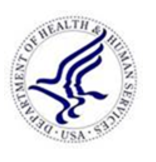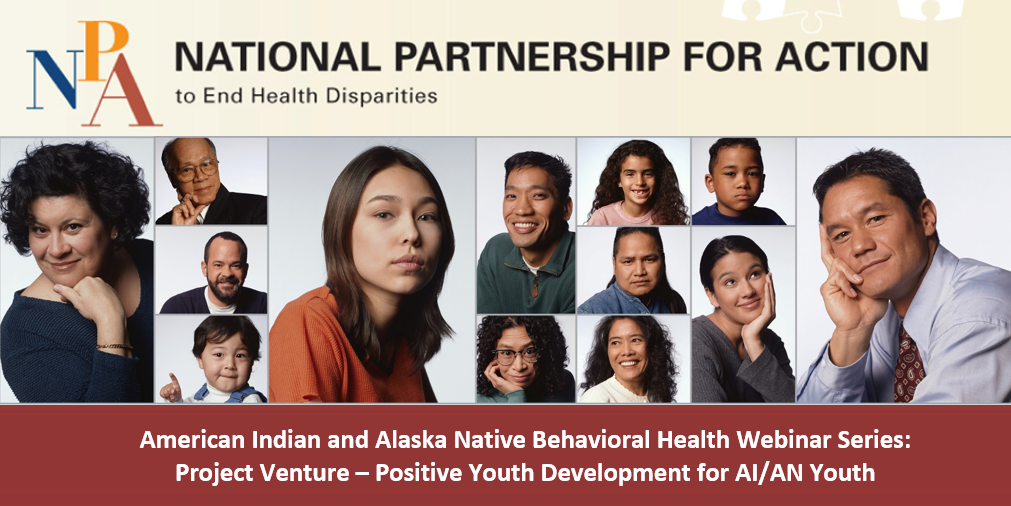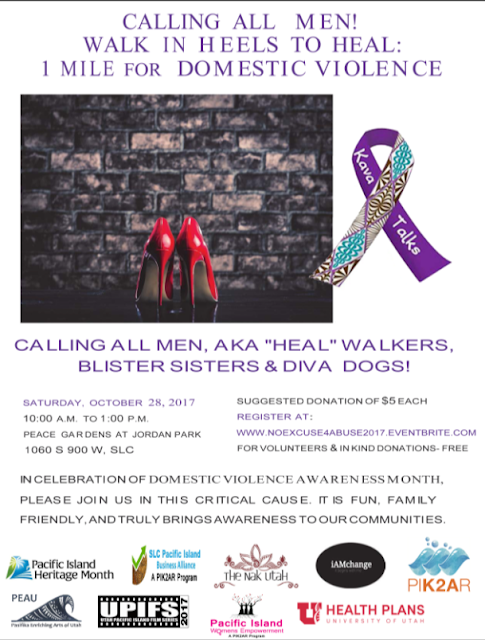Thursday, September 28, 2017
College and Career Readiness Event
Labels:
African Americans/Blacks,
Events
Wednesday, September 27, 2017
Tribal Grant Writers Training
 Office of Minority Health Resource Center (OMHRC), in collaboration with the Paiute Tribe of Utah Health Department: Tribal Grant Writers Training. Event to be held October 31 to November in Cedar City, UT. Deadline for registration is October 25, 2017. For further information and to register, please contact Elton Naswood.
Office of Minority Health Resource Center (OMHRC), in collaboration with the Paiute Tribe of Utah Health Department: Tribal Grant Writers Training. Event to be held October 31 to November in Cedar City, UT. Deadline for registration is October 25, 2017. For further information and to register, please contact Elton Naswood.
Labels:
American Indians,
Events
Friday, September 22, 2017
How Hispanic/Latino Americans Can Lower Diabetes Risk

Celebrate National Hispanic Heritage Month with Lower Risk
 Did you know that Hispanic and Latino Americans are at higher risk for type 2 diabetes? This National Hispanic Heritage Month (September 15–October 15) is the perfect time to celebrate history, culture, and family—and focus on preventing type 2 diabetes. Did you know that Hispanic and Latino Americans are at higher risk for type 2 diabetes? This National Hispanic Heritage Month (September 15–October 15) is the perfect time to celebrate history, culture, and family—and focus on preventing type 2 diabetes.
Type 2 diabetes often has no clear symptoms, so if your heritage is Hispanic/Latino and you have any of the risk factors below, talk to your doctor about getting your blood sugar tested:
The good news is that making healthy lifestyle changes, such as eating healthy and getting more physical activity, can help prevent or delay type 2 diabetes by up to 58% in people at risk (71% if you’re over 60).
Type 2 diabetes can run in the family, but so can healthy habits. This National Hispanic Heritage Month, why not start a new tradition of preventing type 2 diabetes? Learn more in our feature.
|
Labels:
Events,
Hispanics/Latinos
Thursday, September 21, 2017
Wednesday, September 20, 2017
U.S. Census Bureau Session Information: Hispanics by the Numbers
Labels:
Data and Reports,
Events,
Healthcare Access
Tuesday, September 19, 2017
UDOH Position Opening: Nurse Practicioner
The Department of Health has an opening for a NURSE PRACTITIONER, Utah Cancer Control, posting # 13379. The posting will close at midnight on October 01, 2017 MST
In order to be considered for an interview for these positions, you will need to apply on-line at STATEJOBS.UTAH.GOV . If you have not done so already, you will need to create a job seeker account.
Share this great opportunity with your networks and encourage them to apply at: http://statejobs.utah.gov/job
Labels:
Jobs
Walk for Domestic Violence
Labels:
Events,
Pacific Islanders
CDC Report Released: 2016 School Health Policies and Practices Study (SHPPS) Results
 Today, CDC released district-level findings from the 2016 School Health Policies and Practices Study (SHPPS) on the Healthy Youth Web site. SHPPS is a national study periodically conducted to assess school health policies and practices. Today, CDC released district-level findings from the 2016 School Health Policies and Practices Study (SHPPS) on the Healthy Youth Web site. SHPPS is a national study periodically conducted to assess school health policies and practices.These new district-level data suggest that while improvements are being made in practices around some health issues, there are issues that still need improvement. SHPPS data show:
| |
| Included in this new report are results on school policies and practices, such as health education; health services and counseling, psychological and social services; and healthy and safe school environment. Additional materials include two fact sheets highlighting key 2016 results and trends over time (2000-2016). To access these materials and learn more about SHPPS, visit: www.cdc.gov/shpps/ Please share this new report and related resources with education and public health partners implementing teen HIV, STD and p | |
Labels:
Data and Reports
Now Available: 2016 National Healthcare Quality and Disparities Report
Agency for Healthcare Research and Quality (AHRQ) Annual Report Shows More Americans Have Health Insurance and Receive Safer Care, but Gains Remain Uneven Among Minorities
 AHRQ’s 2016 National Healthcare Quality and Disparities Report shows that the quality of health care continues to improve gradually each year but gains remain uneven among minorities. Some of the biggest improvements are in measures of “person-centered care,” such as communication between doctors and their patients, and the safety of medical care, such as fewer complications among hospital patients who were taking anticoagulants other than warfarin.The report also indicates that fewer people were uninsured, as 11 percent of people under age 65 were uninsured in 2016 compared with 18 percent in 2010. However, most disparities in health care quality continued to persist, with no significant improvements for any racial or ethnic groups, especially people in poor, low-income and uninsured households as well as blacks and Hispanics. As a companion to the report, AHRQ’s Chartbook on Patient Safety provides new data on dozens of safety measures, such the rate of central line-associated bloodstream infections decreasing by more than 40 percent between 2009 and 2014. Access an AHRQ Views blog on AHRQ’s new report and chartbook.
AHRQ’s 2016 National Healthcare Quality and Disparities Report shows that the quality of health care continues to improve gradually each year but gains remain uneven among minorities. Some of the biggest improvements are in measures of “person-centered care,” such as communication between doctors and their patients, and the safety of medical care, such as fewer complications among hospital patients who were taking anticoagulants other than warfarin.The report also indicates that fewer people were uninsured, as 11 percent of people under age 65 were uninsured in 2016 compared with 18 percent in 2010. However, most disparities in health care quality continued to persist, with no significant improvements for any racial or ethnic groups, especially people in poor, low-income and uninsured households as well as blacks and Hispanics. As a companion to the report, AHRQ’s Chartbook on Patient Safety provides new data on dozens of safety measures, such the rate of central line-associated bloodstream infections decreasing by more than 40 percent between 2009 and 2014. Access an AHRQ Views blog on AHRQ’s new report and chartbook.
 AHRQ’s 2016 National Healthcare Quality and Disparities Report shows that the quality of health care continues to improve gradually each year but gains remain uneven among minorities. Some of the biggest improvements are in measures of “person-centered care,” such as communication between doctors and their patients, and the safety of medical care, such as fewer complications among hospital patients who were taking anticoagulants other than warfarin.The report also indicates that fewer people were uninsured, as 11 percent of people under age 65 were uninsured in 2016 compared with 18 percent in 2010. However, most disparities in health care quality continued to persist, with no significant improvements for any racial or ethnic groups, especially people in poor, low-income and uninsured households as well as blacks and Hispanics. As a companion to the report, AHRQ’s Chartbook on Patient Safety provides new data on dozens of safety measures, such the rate of central line-associated bloodstream infections decreasing by more than 40 percent between 2009 and 2014. Access an AHRQ Views blog on AHRQ’s new report and chartbook.
AHRQ’s 2016 National Healthcare Quality and Disparities Report shows that the quality of health care continues to improve gradually each year but gains remain uneven among minorities. Some of the biggest improvements are in measures of “person-centered care,” such as communication between doctors and their patients, and the safety of medical care, such as fewer complications among hospital patients who were taking anticoagulants other than warfarin.The report also indicates that fewer people were uninsured, as 11 percent of people under age 65 were uninsured in 2016 compared with 18 percent in 2010. However, most disparities in health care quality continued to persist, with no significant improvements for any racial or ethnic groups, especially people in poor, low-income and uninsured households as well as blacks and Hispanics. As a companion to the report, AHRQ’s Chartbook on Patient Safety provides new data on dozens of safety measures, such the rate of central line-associated bloodstream infections decreasing by more than 40 percent between 2009 and 2014. Access an AHRQ Views blog on AHRQ’s new report and chartbook.
Labels:
Data and Reports
Webinar - Equity and Preterm Birth: A context for Action
SPEAKERS:
|
Tuesday, October 3rd, 2017 3:00 PM - 5:00 PM EST
|
Labels:
Baby Health,
Events,
Healthcare Access
Monday, September 18, 2017
Getting Data Right— and Righteous to Improve Hispanic or Latino Health
CDC’s Office of Minority Health and Health Equity Presents
Getting Data Right— and Righteous to Improve Hispanic or Latino Health
featuring
Alfonso Rodríguez Lainz, PhD, DVM, MPVM
Epidemiologist, U.S.– Mexico Unit, Division of Global Migration and Quarantine, CDC
October 3, 2017
1:00 – 2:00 p.m. ET
This discussion will focus on the importance of population health monitoring programs to collect data elements that better capture Hispanics’ diversity, and to provide language assistance to assure meaningful inclusion of all Latino and Hispanic populations in national health monitoring.
Registration is not required. For more information contact OMHHE@cdc.gov.
Labels:
Events,
Hispanics/Latinos
Partnering for Healthy Pregnancies: Before, During and After
Partnering for Healthy Pregnancies: Before, During and After
A webinar hosted by the
FDA Office of Women’s Health
and the
Region VIII Women’s Health Interagency Taskforce
Thursday, September 28th, 2:00 – 3:00 p.m. MST (4:00 – 5:00 p.m. EST)
Learn about the free resources available to providers, home visitors and other public health professionals
from the Food and Drug Administration and the Office of the Assistant Secretary’s Office on Women’s Health!
To register: https://hrsa.connectsolutions.
For questions, please contact cpruitt@hrsa.gov or susana.calderon@hhs.gov
Labels:
Baby Health
HHS Commits $144.1 Million in Additional Funding for Opioid Crisis
The U.S. Department of Health and Human Services has awarded an additional $144.1 million in grants to prevent and treat opioid addiction in support of President Trump’s commitment to combat the opioid crisis. The grants will be administered by the Substance Abuse and Mental Health Services Administration (SAMHSA).
“Those supporting prevention, treatment, and recovery efforts in our local communities are heroes in our nation’s battle against the opioid crisis,” said HHS Secretary Tom Price, M.D. “On our nationwide listening tour, we have heard how critical federal resources can empower their efforts to meet the challenges of substance abuse and addiction, especially with the opioid crisis. These grants will help expand treatment and recovery services to pregnant and postpartum women who are struggling with substance abuse, train our first responders to effectively use overdose reversing drugs, improve access to medication-assisted treatment, and increase long term recovery services. Together, we can heal communities and save lives.”
According to SAMHSA’s National Survey on Drug Use and Health, in 2016 an estimated 11.8 million people misused opioids in the past year, including prescription pain relievers and heroin. Preliminary data from the Centers for Disease Control and Prevention for 2016 suggests the number of drug overdose deaths, most of them due to opioids will likely top 60,000.
According to SAMHSA’s National Survey on Drug Use and Health, in 2016 an estimated 11.8 million people misused opioids in the past year, including prescription pain relievers and heroin. Preliminary data from the Centers for Disease Control and Prevention for 2016 suggests the number of drug overdose deaths, most of them due to opioids will likely top 60,000.
 “Opioid use disorders continue to plague our nation,” said Dr. Elinore McCance-Katz, Assistant Secretary for Mental Health and Substance Use. “These funds will support and expand prevention, treatment and recovery services in America’s communities.”
“Opioid use disorders continue to plague our nation,” said Dr. Elinore McCance-Katz, Assistant Secretary for Mental Health and Substance Use. “These funds will support and expand prevention, treatment and recovery services in America’s communities.”
The first four of the six grant programs listed below were authorized in the Comprehensive Addiction and Recovery Act (CARA) of 2016, (P.L. 114-198). CARA authorized funding to fight the opioid epidemic through prevention, treatment, recovery, overdose reversal, and other efforts. The fifth grant program listed, Medication Assisted Treatment (MAT), received an increase in funding for opioids in the fiscal year 2017 Omnibus Appropriations bill.
SAMHSA is issuing the funding through the six grant programs listed below in the following amounts:
· First Responders – Comprehensive Addiction and Recovery Act - $44.7 million. The purpose of this program is to provide training and medication for emergency treatment of opioid overdose.
· State Pilot Grant for Treatment of Pregnant and Postpartum Women - Comprehensive Addiction and Recovery Act - $9.8 million. The purpose of the program is to support family-based services for pregnant and postpartum women with a primary diagnosis of a substance use disorder, including opioid use disorders.
· Building Communities of Recovery - Comprehensive Addiction and Recovery Act - $4.6 million. The purpose of this program is to increase the availability of long-term recovery support for substance abuse and addiction.
· Improving Access to Overdose Treatment - Comprehensive Addiction and Recovery Act - $1 million. The purpose of this program is to expand access to FDA-approved drugs or devices for emergency treatment of opioid overdose.
· Targeted Capacity Expansion: Medication Assisted Treatment (MAT) – Prescription Drug and Opioid Addiction - $35 million. The purpose of this program is to expand access to medication-assisted treatment for persons with an opioid use disorder seeking treatment.
· Services Grant Program for Residential Treatment for Pregnant and Postpartum Women - $49 million. The purpose of this program is to expand services for women and their children in residential substance abuse treatment facilities, among other services.
The funding will be distributed to 58 recipients, including states, cities, healthcare providers and community organizations. The funds will be awarded for three to five years, subject to availability and depending on the program.
Earlier this year, HHS Secretary Price outlined five strategies to provide the Department with a comprehensive framework to combat the ongoing opioid crisis: improving access to prevention, treatment, and recovery services, including the full range of MAT; targeting the availability and distribution of overdose-reversing drugs; strengthening public health data and reporting; supporting cutting-edge research on pain and addiction; and advancing the practice of pain management.
These awards follow a separate award of $485 million in grants in April 2017 – provided by the 21st Century Cures Act – to all 50 states, the District of Columbia, four U.S. territories, and the free associated states of Palau and Micronesia by SAMHSA for opioid abuse prevention, treatment, and recovery.
Labels:
Events,
Front Page News,
Healthcare Access
Friday, September 15, 2017
HRSA awards $200 million to health centers nationwide to tackle mental health and fight the opioid overdose crisis

HRSA awards $200 million
to health centers nationwide to tackle
mental health and fight the opioid overdose crisis
| Today, the Health Resources and Services Administration (HRSA) awarded more than $200 million to 1,178 health centers and 13 rural health organizations in every U.S. state, the District of Columbia, Puerto Rico, the Virgin Islands, and the Pacific Basin to increase access to substance abuse and mental health services. “No corner of our country, from rural areas to urban centers, has escaped the scourge of the opioid crisis,” said HHS Secretary Tom Price, M.D. “The Trump Administration is taking strong, decisive action to respond to the crisis caused by the opioid epidemic. These grants from HRSA go directly to local organizations, which are best situated to address substance abuse and mental health issues in their own communities.” Approximately $200 million will support 1,178 health centers to support expansion and integration of mental health services and substance abuse services. These services focus on the treatment, prevention, and awareness of opioid abuse in the primary care setting by increasing personnel, leveraging health information technology, and providing training. The expanded funding is part of the Department of Health and Human Services’ five-point strategy to fight the opioid epidemic by:
Rural states are more likely to have higher rates of overdose death, particularly from prescription opioid overdose. To address their unique needs, 496 of the health centers that receive The Access Increases in Mental Health and Substance Abuse Services (AIMS) awards are located in rural communities. An additional nearly $3.3 million supports 13 rural health organizations to increase access to treatment and recovery services for opioid abuse under the Rural Health Opioid Program (RHOP) and the Substance Abuse Treatment Telehealth Network Grant Program (SAT -TNGP). The organizations will use these awards to advance evidence-based, opioid use disorder interventions to overcome challenges in rural communities, such as longer emergency response times and lack of access to substance abuse treatment providers. The new RHOP provides approximately $2.5 million for 10 rural health organizations in Arizona, Arkansas, Indiana, Kentucky, Maine, Maryland, Montana, Ohio, and Virginia to help community members struggling with opioid abuse find locally available treatment options and support services through partnerships with local health care providers and other community-based groups. The SAT –TNGP provides approximately $670,000 for three organizations to use evidence-based, telehealth programs and networks to improve access to substance abuse treatment in rural, frontier and underserved communities. For more information about the impact of integrating mental health and substance abuse services at the community level, and a list of FY 2017 AIMS award recipients, visit: https://bphc.hrsa.gov/ To view a list of the RHOP and the SAT –TNGP award recipients, visit: https://www.hrsa.gov/about/ To learn more about the Health Center Program, visit: http://bphc.hrsa.gov/ To find a health center in your area, visit: http:// To learn more about the FORHP, visit: https://www.hrsa.gov/ |
Labels:
Front Page News
Hispanic Heritage Month- September 15 to October 15


Hispanic Heritage Month is observed every year from September 15 to October 15 to recognize the rich cultural influence of Hispanics/Latinos in the United States. During this month, we celebrate and highlight Hispanic Heritage and look at key health issues that affect the community and offer resources and events that one can learn from and get informed in English and Spanish language.
Please visit the Office of Minority Health Hispanic Heritage Month site for updates on available downloadable materials and events in observance of Hispanic Heritage Month.
Labels:
Events,
Hispanics/Latinos
Thursday, September 14, 2017
Positive Youth Development for American Indian and Alaska Native Youth
 Project Venture, an evidence-based intervention, combines traditional native wisdom with positive youth development, social emotional learning, outdoor adventure, and service learning to create a unique approach that has been successful for more than 25 years. Beginning with a camp in Oklahoma during 1982, Project Venture has evolved into a model program recognized by the Substance Abuse and Mental Health Services Administration (SAMHSA) that has been implemented in 25 states, 8 Canadian provinces, and Hungary. The National Indian Youth Leadership Project founded Project Venture and provides training, coaching, mentoring, curriculum development, and grant-writing assistance to program participants. The webinar will highlight the project’s core elements and guiding principles of this unique, internationally recognized native youth program and assist participants with exploring their readiness to implement it.
Project Venture, an evidence-based intervention, combines traditional native wisdom with positive youth development, social emotional learning, outdoor adventure, and service learning to create a unique approach that has been successful for more than 25 years. Beginning with a camp in Oklahoma during 1982, Project Venture has evolved into a model program recognized by the Substance Abuse and Mental Health Services Administration (SAMHSA) that has been implemented in 25 states, 8 Canadian provinces, and Hungary. The National Indian Youth Leadership Project founded Project Venture and provides training, coaching, mentoring, curriculum development, and grant-writing assistance to program participants. The webinar will highlight the project’s core elements and guiding principles of this unique, internationally recognized native youth program and assist participants with exploring their readiness to implement it.
TOPIC: Project Venture – Positive Youth Development for American Indian and Alaska Native Youth
DATE: September 20, 2017
TIME: 3:00 p.m. – 4:00 p.m. Eastern Daylight Time
SPEAKERS:
Moderator: Dr. Francine Gachupin, Member, American Indian and Alaska Native NPA Caucus
Presenter: McClellan Hall, Founder and Executive Director of the National Indian Youth Leadership Project
Register Here*: http://tinyurl.com/
The American Indian and Alaska Native National Partnership for Action to End Health Disparities (NPA) Caucus provides a forum for members to increase dialogue across the country and to coordinate and enhance tribal, state and local efforts to address health disparities and the social determinants of health for AI/ANs.
Visit the AI/AN NPA Caucus website for more information: http://aian.npa-rhec.org/.
*If the registration link does not work, please copy the entire link and paste it into your web browser. For webinar-specific questions, contact the moderator: csantos@explorepsa.com.
Labels:
American Indians,
Events
New funding opportunity from RWJF
What drives a patient’s trust—or mistrust—in their physician, nurse, hospital, health system, or health insurer?
 While trust and respect in the patient/physician relationship are critical, the larger health care system and its many components—from customer service to clinical support staff to health insurance and billing—also play an important role in creating a health care environment that can meet patients’ needs.
While trust and respect in the patient/physician relationship are critical, the larger health care system and its many components—from customer service to clinical support staff to health insurance and billing—also play an important role in creating a health care environment that can meet patients’ needs.
RWJF seeks to fund research studies that will examine how to build trust and mutual respect to better meet vulnerable patients’ health care needs. This funding opportunity is supported by AcademyHealth.
Labels:
Funding Opportunities
Tuesday, September 12, 2017
Public Health Grand Rounds: Healthy Aging- Promoting Well-being in Older Adults

Healthy Aging: Promoting Well-being in Older Adults is the focus for the September 19 CDC Public Health Grand Rounds. The session -- viewable via live webcast -- will be on Tuesday, September 19, at 1:00 to 2:00 p.m. (ET). Experts will discuss the impact the aging population will have on caregivers, the public health system and older people themselves. Grand Rounds participants will learn about what CDC and public health officials can do and are doing to help older people maintain their health and independence. Presenters include:
- Sarah Lenz Lock, JD, Senior Vice President for Policy, AARP, and Executive Director, Global Council on Brain Health, on “Promoting Health, Well-Being and Independence as We Age”
- Matthew Baumgart, Senior Director for Public Policy, Alzheimer’s Association, on “Healthy Body, Healthy Brain: The State of Science and the Way Forward”
- C. Grace Whiting, JD, Chief Operating Officer, National Alliance for Caregiving, on “Healthy Caregiver, Healthy Patient: Importance of Healthy Aging for Caregivers”
- Lisa C. McGuire, PhD, Lead, CDC Alzheimer’s Disease and Healthy Aging Program, Centers for Disease Control and Prevention, on “CDC’s Healthy Brain Initiative: Moving Forward Together”
CDC will broadcast live the Grand Rounds on its website: https://www.cdc.gov/
All continuing education credit for Public Health Grand Rounds (PHGR) is issued online through the CDC/ATSDR Training and Continuing Education Online system: http://www2a.cdc.gov/TCEOnline
All continuing education credit for Public Health Grand Rounds (PHGR) is issued online through the CDC/ATSDR Training and Continuing Education Online system: http://www2a.cdc.gov/TCEOnline
Labels:
Events
Monday, September 11, 2017
A Roadmap to Behavioral Health
Contact: CMS Media Relations
A Roadmap to Behavioral Health
The Centers for Medicare & Medicaid Services Office of Minority Health (CMS OMH) in partnership with Substance Abuse and Mental Health Services Administration (SAMHSA) released The Roadmap to Behavioral Health focuses on behavioral health as a companion guide to the C2C Roadmap to Better Care and a Healthier You. The consumer-facing resource offers important information about mental health and substance use disorder services, finding a behavioral health provider, defining behavioral health terms, receiving services, and following up on care. The resource walks through the 8 Steps of the Roadmap to offer information specific to behavioral health, and offers a glossary and links to other HHS resources.
Click here to download a copy today! https://www.cms.gov/About-CMS/
Labels:
Data and Reports,
Healthcare Access
Subscribe to:
Comments (Atom)













